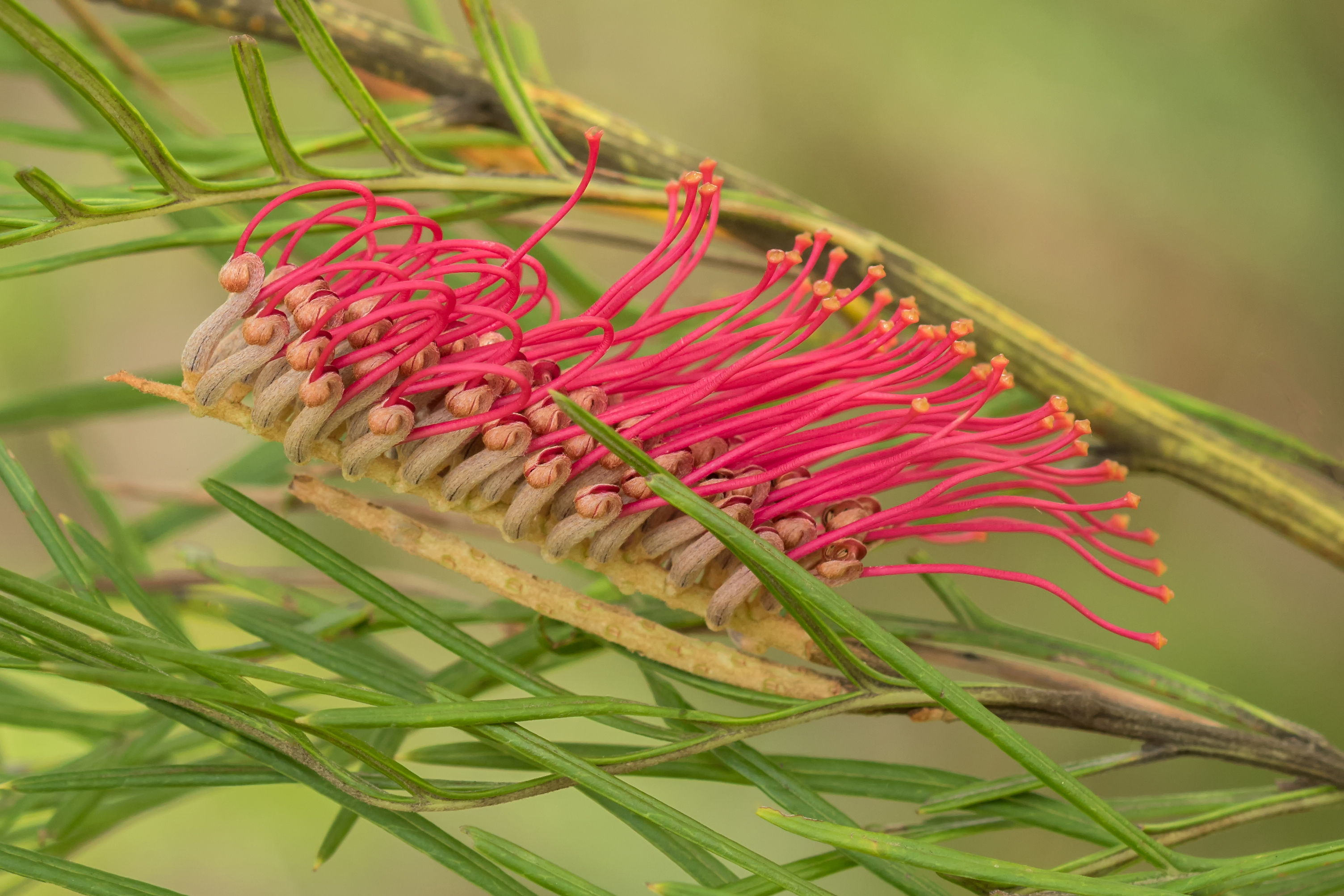Red toothbrushes
(Grevillea hookeriana)

Description
Grevillea hookeriana (red toothbrushes or Hooker's grevillea) is a shrub species in the family Proteaceae. It is endemic to the south west region of Western Australia. It usually grows to between 0.5 and 2.5 metres in height and 4 metres wide. Yellow, red or black "toothbrush" flowers are produced between May and November. A cultivar known as G.'Red Hooks' (often erroneously referred to as G. hookeriana or G. hookerana) has been in cultivation for many years. It is a hybrid of G. hookeriana and G. tetragonoloba. G. hookeriana is comparatively rare in cultivation, and less vigorous than the cultivar. It is best suited to a climate where the summers are dry. It requires good drainage and prefers a sunny or partially shaded position and has moderate frost resistance. Propagation is from semi-mature cuttings or seed. Plants in the genus Grevillea are shrubs, rarely small trees with simple or compound leaves arranged alternately along the branchlets. The flowers are zygomorphic and typically arranged in pairs along a sometimes branched raceme at the ends of branchlets. The flowers are bisexual, usually with four tepals in a single whorl. There are four stamens and the gynoecium has a single carpel. The fruit is a thin-walled follicle that splits down only one side, releasing one or two seeds before the next growing season. The genus Grevillea was first formally described in 1809 by Joseph Knight from an unpublished manuscript by Robert Brown. Knight gave the spelling Grevillia, corrected by Brown in 1810 to Grevillea in Transactions of the Linnean Society of London. The genus was named in honour of Charles Francis Greville, an 18th-century patron of botany and co-founder of the Royal Horticultural Society. Grevilleas grow in most habitats, although few grow in alpine areas, in swamps or saline soils. Most species are endemic to Australia but three species grow in New Guinea, (G. papuana is endemic), three are endemic to New Caledonia and one species (G. elbertii) is endemic to Sulawesi in Indonesia Grevilleas are good bird-attracting plants. Honeyeaters in particular are common visitors. They are also used as food plants by the larvae of some Lepidoptera species, including the dryandra moth and Pieris rapae (small white).
Taxonomic tree:







